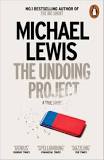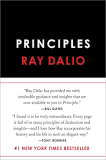I have always been fascinated by how people make decisions. What makes one person so good at discerning the right path, while others seem to get themselves into bad situations over and over again? This year, I decided to really study this question and develop some good answers.
In this process, I have had the privilege of discovering some really interesting books with insights about decision-making. Three books I can recommend in particular are: “The Undoing Project” by Michael Lewis, “Thinking Fast & Slow” by Daniel Kahneman, and “Principles” by Ray Dalio.
I’ll start with a concept from Ray Dalio here …
“Decision-making is a 2-step process, first learning then deciding.”
So, what is it that we need to learn? Well, obviously this first starts with information that’s directly relevant to the decision at hand. In order to choose which investment to make, we have to learn information about the potential risk and reward. In order to choose which wine to order with dinner, we have to learn at least a little about wine regions, grape varietals, and/or vintages. In order to choose a course of action in our work or personal life, we have to learn about the potential results and related consequences. Learning is, no doubt, a big part of the decision-making process. But that’s usually the easy part.
The second step, according to Dalio, is deciding. In order to actually decide effectively, we also have to learn to recognize how much we don’t know, and we have to understand how our natural tendencies can lead us into making poor decisions.
Poor decisions can be a result of either poor information, misinterpretation of information, or a lack of discipline in acting on what we know.
Poor information – or at least a lack of information – can come from complacency — an apathy towards ongoing learning — but also because life is much more complex than most of us realize. Not only do most people not know what they don’t know, but they also don’t even bother to factor their ignorance into their judgments. Most of us drastically overestimate how good and knowledgeable we are at most things, and drastically underestimate the role of luck and natural variance in determining outcomes. This leads people to have an overconfidence, which can result in complacency. It’s important to have an insatiable curiosity. At the same time, none of us should be so arrogant as to think we know everything there is to know.
There are several common factors that can contribute to misinterpretation. One of these factors is confirmation bias, which can be defined simply as looking for evidence that confirms what we already believe. The human mind is bad at seeing things it does not expect to see, and all too eager to see what it expects to see. Confirmation bias is especially insidious because you don’t even realize it is happening. What happens to us is that we become attached to certain beliefs, and we fit the evidence of what we see to what we believe, rather than adjusting what we believe based on the evidence of what we see.
I once heard the prominent Silicon Valley entrepreneur and venture capitalist, Marc Andreessen, promote the concept:
“Strong beliefs, loosely held.”
It’s important to develop conviction in the things that we believe, but it’s at least equally important to be open-minded enough to not hold onto our beliefs in the face of mounting contradictory evidence. Good decision-makers tend to deliberately seek out information that challenges their beliefs. They are consistently open to ongoing learning and critical feedback. Through this process, their beliefs either strengthen or evolve. But they are less likely to get stuck holding onto false beliefs.
Decision-making is also affected by how we frame choices. Kahneman teaches an interesting example of cancer patients facing a choice between surgery and radiation, where surgery is more likely to extend their life, but comes with a small risk of instant death. When you tell people they have a 90% chance of surviving surgery, about 82% of them opt for surgery. But when you tell people they have a 10% chance of dying from the surgery, only about 54% choose surgery. People facing a life and death decision respond not just to the odds but to the way the odds are described to them. Kahneman goes on to conclude that:
“People do not choose between things.
They choose between descriptions of things.”
Learning to frame choices positively can, in most cases, improve decision-making. If you are in any form of sales, this is an important concept that can be utilized in order to help people make positive choices.
The third key factor that can adversely affect decision-making is a lack of discipline to act on what we know. Why do so many people seem to consistently take actions that are contradictory to what they know they should do?
Pay special attention to this statement from Ray Dalio:
“The biggest threat to good decision-making is harmful emotions.”
One example of a harmful emotions is stubbornness. Some people are actually more concerned with looking bad than they are with actually being proven wrong. Lewis shares a concept called “The Endowment Effect” which suggests that people attach some strange extra value to what they already have. Examples of this in real life could be:
- Someone who’s slow to sell a vacation home that they would never buy all over again.
- Sports teams reluctant to trade high draft picks, even when being offered more statistical value.
- Investors reluctant to bail out on falling stocks.
Be aware of holding onto certain ways of doing things, just because it’s how you’ve always done it.
A related concept is something called “Sunk Cost.” Sunk cost is something you have already spent or lost. It does not mean that you have to double down on a bad decision. Often, the fact that someone has already somehow committed to something leads them to follow through when in reality, they should turn back or make a new decision. This can lead to downright comical situations where we do stuff like this:
- Staying in the slowest-moving line even when it’s clear we should move to another line.
- Blindly following a route or trail looking for a new way to our destination rather than traveling back to where we made a wrong turn.
- Continuing to overpay for something because of an initial “deposit” that we would have to forfeit.
When evaluating certain situations, remember that sunk cost is precisely that, SUNK. Often it’s best to just cut your losses.
Last, when it comes to emotions, it’s so important for all of us to realize that we do not make optimal decisions when we are angry, stressed, or tired. Be careful of making major decisions under such circumstances, as it’s easier to make mistakes.
So, what conclusions can we draw from the insights in this blog? Here’s what I would offer in summary …
- Ongoing learning is one of the most important keys to effectiveness in life.
- In most life situations, don’t be afraid to make a bad decision. Instead, make decisions, then learn to correct your course as you move forward.
- Always remain open-minded to possibilities that are outside your own expectations, and occasionally seek out contradictory voices to increase your perspective.
- Practice viewing choices with a positive frame, and utilize this concept when influencing others.
- Always calm your emotions before making major life decisions.
- Finally, always remember this: “What’s right is more important than who’s right.”
Click each image below to order a copy.


